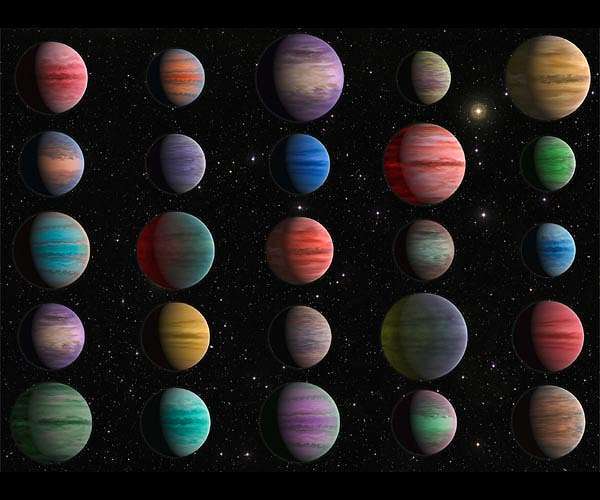22.09.2024

A team of international astronomers, including members from the University of Geneva, NCCR PlanetS, and the Centro de Astrobiologia (CAB), has discovered the "Neptunian Ridge," a newly recognized feature in the distribution of exoplanets. This finding offers fresh insights into the Neptunian Desert, a region largely devoid of hot Neptune-like planets, and the Neptunian Savanna, where such planets are more frequently observed. The study sheds light on the dynamic processes shaping these regions, with significant implications for understanding the evolution of exoplanets close to their host stars. The discovery is published in ' Astronomyand Astrophysics'.
Astronomers typically chart exoplanet systems by plotting planet radius against orbital periods. These plots reveal patterns, including the mysterious Neptunian Desert - an area surprisingly sparse in Neptune-sized planets. Scientists believe this scarcity is due to intense stellar radiation stripping away the atmospheres of these planets, leaving smaller remnants.
Outside this hostile zone lies the Neptunian Savanna, where Neptune-sized planets are more common. Here, conditions are less severe, allowing planets to retain their gaseous atmospheres, thus surviving in this slightly safer region. Understanding the boundaries between the Neptunian Desert and Savanna has become a major focus in exoplanet research.
Introducing the Neptunian Ridge
The new study has identified a previously unknown concentration of Neptune-sized planets at the boundary of the Neptunian Desert, now termed the "Neptunian Ridge."
"We found an overdensity of planets in this region, indicating a sharp transition between the barren Neptunian Desert and the more populated Neptunian Savanna," said Dr. Vincent Bourrier, Assistant Professor at the University of Geneva and co-author of the study. This ridge signifies a critical zone where planets can migrate inward yet manage to resist the intense radiation from their stars.
Methods and Tools for Discovery
Using data from NASA's Kepler mission, the research team applied advanced statistical techniques to correct for observational biases. They meticulously mapped the relationship between orbital periods and planetary radii, uncovering distinct regions that define the Neptunian landscape. The Neptunian Ridge is observed between 3.2 and 5.7 days of orbital periods, positioned between the Neptunian Desert and the Neptunian Savanna. This detailed analysis enhances our understanding of the migration and survival mechanisms that govern these exoplanets.
Insights into Planet Formation and Evolution
"The Neptunian Ridge stands tall above the Desert and Savanna. It provides us with a key to understanding the physical mechanisms shaping the Desert," explained Bourrier. The existence of the Ridge suggests that some Neptune-sized planets migrate to this region through a process called high-eccentricity migration, occurring later in the planet's life, enabling them to survive the intense stellar radiation. Similar migration processes, combined with photoevaporation, are likely responsible for the features seen in the Neptunian region. Comparisons between the Neptunian Ridge and the "hot Jupiter pileup" suggest that these evolutionary processes might influence both categories of exoplanets.
Expanding Observations
To further explore the Neptunian Desert and Savanna, researchers from the University of Geneva have initiated an ambitious observational program using the high-resolution spectrograph ESPRESSO, mounted on the Very Large Telescope of the European Southern Observatory (ESO). This program will study the orientation of close-in Neptune orbits, which is directly tied to the migration process. This research promises to deliver crucial data for understanding planet formation and evolution.
"The Neptunian Ridge is just the beginning," said Amadeo Castro-Gonzalez, Ph.D. student at the Center for Astrobiology in Madrid, and lead author of the study. "With upcoming results from this observational program, we'll be able to test our hypotheses about the origins and evolution of these intriguing worlds, providing a more comprehensive view of the close-in Neptunian landscape."
Quelle: SD
